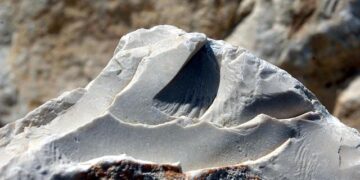Shortly after his sixty-seventh birthday, Ernesto Chavez retired from his job at a Los Angeles food warehouse. Sara, his wife of forty-five years, told me that he meticulously took his medications for high blood pressure and cholesterol, hoping to enjoy his time with his grandchildren. But one morning in January, 2021, Ernesto burned with fever, his chest heaving as though he were once again lifting heavy boxes. At the hospital, he tested positive for COVID-19. His oxygen levels plummeted, and he was quickly intubated. Ten days later, his lungs were failing, his face was bloated from litres of intravenous fluid, and his hands and feet had begun to cool. As his chances of survival waned, I arranged to speak with his family about a subject inseparable from death itself: cardiopulmonary resuscitation, or CPR.
For decades, physicians have debated whether CPR should be offered to people who suffer from the final blows of incurable illness, be it heart failure, advanced cancer, or dementia. Although CPR has become synonymous with medical heroism, nearly eighty-five per cent of those who receive it in a hospital die, their last moments marked by pain and chaos. The pandemic only deepened the risks: every chest compression spewed contagious particles into the air, and intubation, which often follows compressions, exposed doctors to virus-laden saliva. Hospitals in Michigan and Georgia reported that no COVID patient survived the procedure. An old question acquired new urgency: Why was CPR a default treatment, even for people as sick as Ernesto?
As a palliative-care physician, I help people with serious, often terminal, illness consider a path forward. During the pandemic, this involved weekly Zoom meetings with each family whose loved one was in the I.C.U. with COVID. We discussed how the virus could damage the lungs irreversibly, how we gauged a patient’s condition, and what we would do if, despite being on life support, that patient died.
On a gray afternoon, I logged on to Zoom to speak with Ernesto’s family. I would be joined by Sara, her daughter Nancy, and Neal, an internal-medicine resident covering the I.C.U. Before the meeting, I asked Neal whether he’d been taught how to have these conversations. “Nope,” he said. I asked him what he might say to Ernesto’s family. “Unfortunately, he still needs the ventilator for his lungs, and he’s not showing signs of improvement. We want you to know that he is very sick,” he said, his expression solemn. “Because he is so sick, his heart could stop. If that happened, would you want us to do CPR to revive him?” He used his hands to simulate chest compressions on a phantom body.
In my own residency, I’d been taught to ask patients whether they wanted CPR, and to go along with their decisions. But an informed decision, I learned, required more from me. One night, I cared for Andrew, a man with incurable colon cancer who’d stopped urinating and become disoriented, unable to hold a conversation. He needed immediate dialysis, so I admitted him to the I.C.U. When I discussed CPR with his wife, I didn’t explain that Andrew’s cancer had caused his heart and kidneys to fail—that he was dying, and that CPR wouldn’t change that. I placed the entire burden of the decision on her shoulders, reducing what should have been a conversation into highly consequential yes-or-no questions: “If Andrew stops breathing, do you want a ventilator?” “If his heart stops, do you want us to do CPR?” To Andrew’s wife, and to most people, these questions mean, “Do you want us to try to save him?” I offered CPR as though it were a choice between life and death.
On the Zoom call, my screen split into three rectangles. Sara and Nancy were huddled on a bed. Dark circles ringed Sara’s eyes, and she told me that Ernesto’s last words to her echoed in her mind. “He said he wants everything done to save his life,” she said. “If he’s going to die anyway, why not try the heroics?” She disappeared, her rectangle suddenly dark. “Sorry, I just don’t want you to see me cry again.”
In residency, I would have assumed that, because Ernesto wanted “everything done,” he would want CPR. But this conversation was about more than resuscitation; it was about death, and how Ernesto would want to be cared for as he approached it. Speaking with Sara, I tried to be frank about a procedure that symbolized—both to doctors and to patients—something other than its reality.
CPR has a life of its own. Training for the public is ubiquitous; in thirty-eight states, students are required to learn the procedure before graduating high school. Unlike colonoscopies, gastric bypass surgery, and cardiac angiograms, CPR has also been glamorized, for decades, on television and in movies. Medical dramas portray it as a daring rescue, a symbol of doctors’ moral resolve. Onscreen, the vast majority of patients survive these charades and return, unscathed, to their regular lives.
But it is an open secret in medicine that CPR is both brutal and rarely effective. The procedure begins at death, when someone loses a pulse. This can happen because of heart problems—a blockage in a coronary artery, say—or when other organs cause cardiac arrest: lung failure depriving the heart of oxygen, kidney failure causing a buildup of toxins. CPR is designed to keep blood flowing to the brain in these situations. It requires a hundred chest compressions per minute, two inches deep, to the beat of the song “Stayin’ Alive,” and using a defibrillator to deliver an electric shock to the chest. In hospitals, it also includes I.V. medications to help the heartbeat, and a ventilator to help the patient breathe. The result, done correctly, is akin to assault. The force of compressions can shatter ribs and breastbones, puncture lungs, bruise the heart, and cause major blood vessels to rupture. Repeated electrical shocks can burn flesh. Even if the procedure restores a heartbeat, brain damage—whether mild memory loss or a vegetative state—occurs in forty per cent of hospitalized patients.
There are times when these risks are worth taking. CPR can save lives when patients are relatively healthy, and when the cause of their death is reversible or unclear. Damar Hamlin, the Buffalo Bills player whose heart stopped during a nationally televised game in January, typifies the person for whom CPR was invented: young and fit, and the victim of a sudden, treatable injury rather than a progressive disease. Still, less than ten per cent of people who receive CPR outside a hospital survive. Inside hospitals, where CPR begins quickly, the odds are slightly better, but only for those who aren’t in the last stages of life. A mere two per cent of adults over sixty-seven with severe chronic disease, including cancer, are alive six months after CPR, and they often deal with pain, physical debility, and post-traumatic stress disorder. Reversing a death is not the same as restoring a life.
Nonetheless, CPR has become an expectation rather than an exception, a treatment meant for a few but applied to all. Any patient admitted to a hospital is automatically considered to be “full code,” meaning they’ll receive CPR if their heart stops. It’s the rare medical procedure for which consent is assumed; you have to sign a form for a blood transfusion, but not for a treatment that can deprive you of a peaceful death. The alternative to CPR, usually called a do-not-resuscitate (D.N.R.) order, tends to inspire fear rather than trust. Although it goes into effect only when a person dies, people worry that it encourages a general neglect: that doctors won’t offer their best care, forgoing options such as antibiotics, chemotherapy, and CT scans. (A newer phrase, “allow natural death” (A.N.D.), avoids the suggestion that other treatments are being withheld.)
It is one thing to understand these distinctions, and another to talk about them. In residency, I couldn’t place invasive catheters unless my supervisors had frequently observed me in action. Yet nobody oversaw me when I spoke to people about how they hoped to live and to die. I learned about the importance of patient autonomy—the right to make informed decisions about one’s care, without being coerced. But I had also taken an oath to prevent harm. Autonomy couldn’t mean deferring entirely to patients; doing so would be like going to a mechanic and being asked to decide, without guidance, how he should fix my car. I needed to explain when a treatment would cause more harm than good, but recommending a D.N.R. often seemed harsh, insensitive.
As a result, I performed CPR on patients I knew it wouldn’t help. When Andrew’s heart stopped, just hours after I’d met him, my team and I did forty minutes of CPR. I felt his breastbone give way beneath my hands with a sickening crack, like the sound of a branch snapping in two. I imagined that my waist was the fulcrum of an oil pump, my hands pressing into soft earth instead of his broken, bleeding body. I watched his monitor instead of his face, ashamed of what I was doing. After he died, I vomited in the bathroom, my scrubs streaked with crimson, a ribbon of his EKG strip stuck to the sole of my shoe.
>>> Read full article>>>
Copyright for syndicated content belongs to the linked Source : The New Yorker – https://www.newyorker.com/news/the-weekend-essay/the-hidden-harms-of-cpr

























![Forest ecology cannot be reduced to arithmetic, says M.I. Varghese [Interview] – Mongabay-India](https://earth-news.info/wp-content/uploads/2025/12/328946-forest-ecology-cannot-be-reduced-to-arithmetic-says-mi-varghese-interview-mongabay-india-120x86.jpg)





